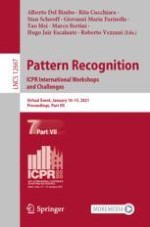2021 | OriginalPaper | Chapter
Survey on Deep Learning-Based Kuzushiji Recognition
Authors : Kazuya Ueki, Tomoka Kojima
Published in: Pattern Recognition. ICPR International Workshops and Challenges
Publisher: Springer International Publishing
Activate our intelligent search to find suitable subject content or patents.
Select sections of text to find matching patents with Artificial Intelligence. powered by
Select sections of text to find additional relevant content using AI-assisted search. powered by

 is derived from different Jibos including
is derived from different Jibos including
 and
and
